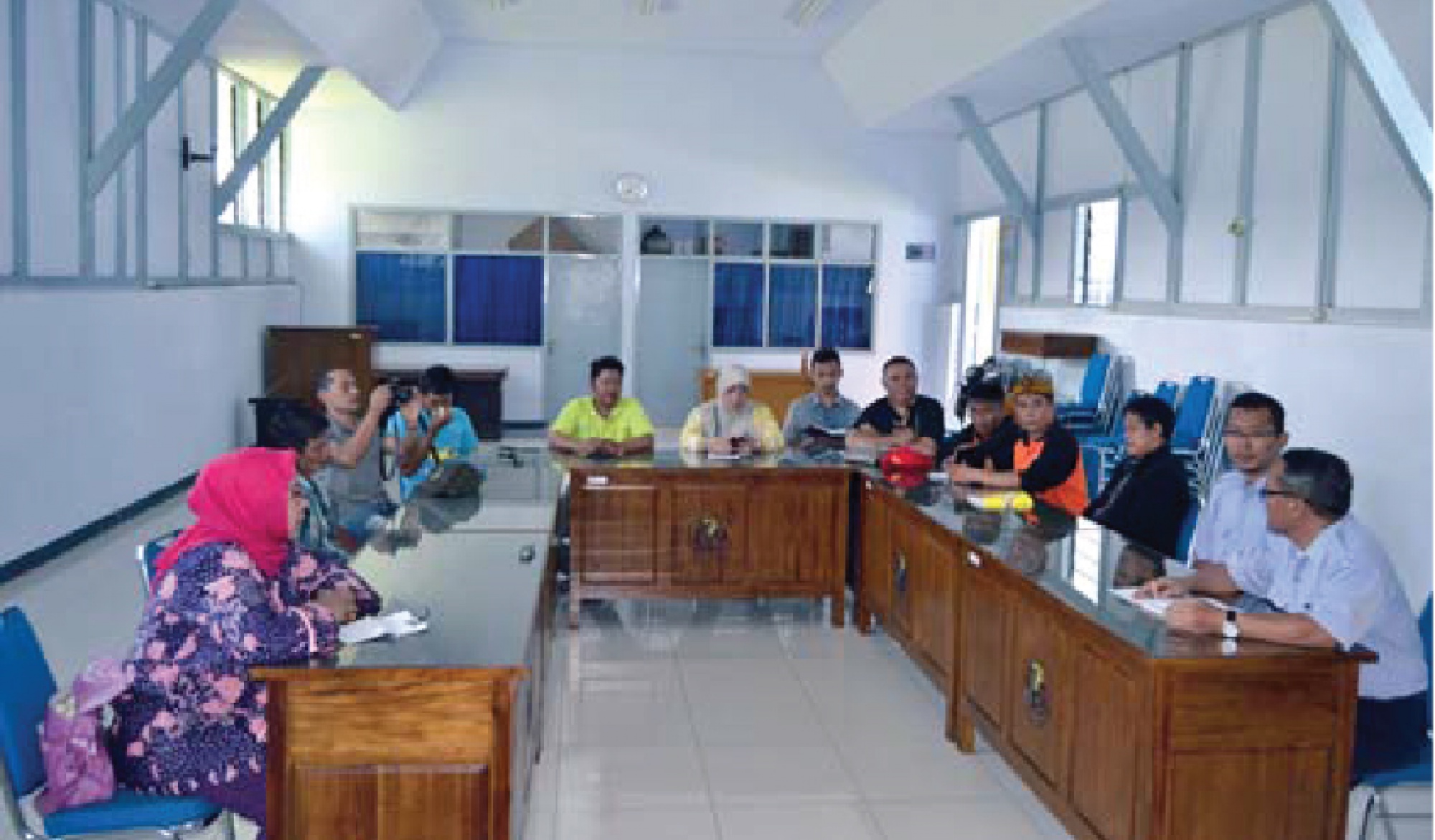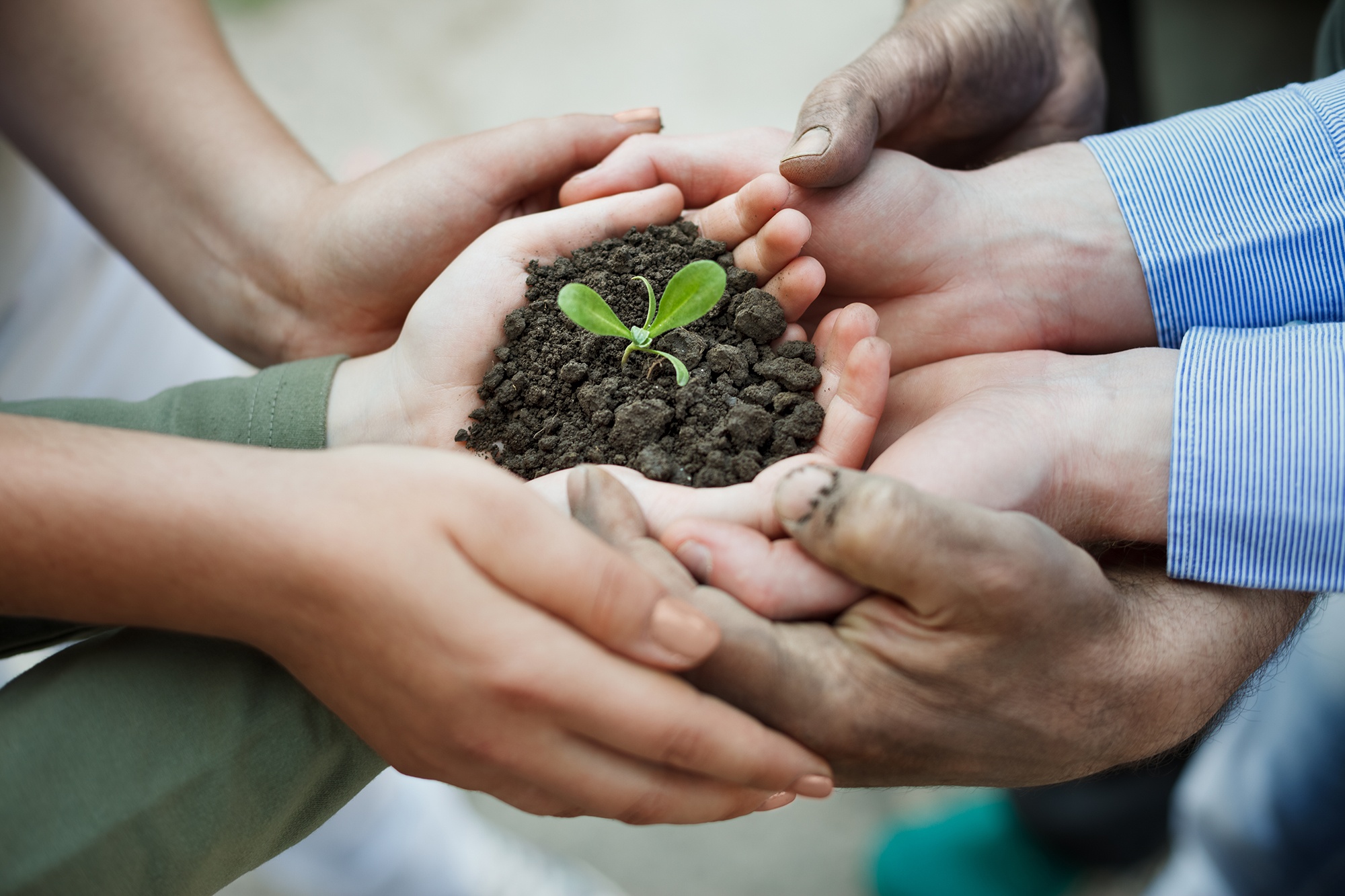
Encourage Cirata's Farmers to Cultivate Water Hyacinth
Water hyacinth is widely recognized as a pest that often inflicts complications to public water supplies such as reservoirs. The population of water hyacinth in Cirata Reservoir, West Java has come to an alarming measure, it blanketed almost the entire water surface. This condition threatens the Keramba Jaring Apung (KJA) (translated: floating net) cultivation activities. A fact that these water plants had spread near the turbine of Pembangkit Listrik Tenaga Air (PLTA) (translated: Hydroelectric Power Plant) is even more distressing because they can interfere with West Java’s main electricity supply.
The Gabungan Perusahaan Makanan Ternak (GPMT) (translated: The Association of Fodder Companies) expressed its concern to the issue and decided to take action. As a partner of more than 1,500 farmers, GPMT provides assistance in eradicating the problem by applying various practices. Following its annual Bersih Cirata Lestari (BCL) (translated: Clean and Everlasing Cirata) program, GPMT conducts an independent feed manufacturing training in Balai Besar Pengembangan Budidaya Air Tawar (BBPBAT) (translated: Development of Freshwater Aquaculture Center) Sukabumi (16/6).
The training is designated for the members of Masyarakat Peduli Cirata (MPC) (translated: Cirata Care Community) and the representatives of Badan Pengelola Waduk Cirata (BPWC) (translated: Cirata Reservoir Governing Body). The 2-day coaching procedure was attended by 10 attentive participants, consist of 5 MPC representatives, 3 BPWC representatives, and 2 GPMT representatives.
Participants was trained by Herry from BBPBAT Sukabumi, a fish feed nutrition researcher who succeeded in converting water hyacinth into quality flour. Feeding knowledge was addressed to the participants on the first day, covering nutrition learning to feed manufacturing that employs local raw materials such as water hyacinth. An exercise to make quality fish feed pellets using water hyacinth was organized on the following day.
Positive Responses
Asep Sulaiman as the Head of MPC expresses a positive feedback on GPMT’s initiative to organize training on harnessing water hyacinth as raw material for animal feed. He believes that the farmers were feeling restless since a while back. The invasion of water hyacinth had provoked a fallout, fish harvest drops and earning plummets.
He also stated that water hyacinth became a common problem in almost all lakes and reservoirs. “This is surely a positive start for us to restore the situation. Now is only a matter of convincing the public that the water hyacinth flour is good for the fish and encourage them to utilize this affordable feeding technology,” Asep added.
Anang Hermanta, the Head of GPMT Fodder Division, claims that the training program is a form of caring expressed by the livestock industry to protect the farming activities in Cirata Resrvoir and its surrounding area. “We as businesspersons in the feeding sector yearn for continuous farming, so in accordance, water and environment preservation is necessary to maintain the community’s income and profit,” he asserted.
Rushadi, representing the Head of BBPBAT Sukabumi, also welcomes the program positively. He expresses gratitude and appreciation to GPMT for initiating the training classes. He believes that this a good start to a better welfare for residents surrounding the Cirata Reservoir, especially the farmers. “This is the beginning of a big dream. The main objective is to create affordable quality feeds,” Rushadi stated.
Rushadi has a strong faith in the potential of water hyacinth as a very appealing commodity that generates profit. “When it shows an economic value, farmers, along with the general population, will rush to remove water hyacinth from the water. This is very beneficial for business longevity. Hopefully it will develop really well in the future,” he responded.
Water Hyacinth Potentials
Edy Permana from GPMT Aquaculture division revealed that the recent BCL program had successfully discards no less than 8,000 sacks of water hyacinth. The potential of water hyacinth in Cirata reservoir promises a valuable prospect, considering the projected siftings scarcity caused by the increasing number of agricultural area conversions.
“It is obvious that currently rice fields are turning into residence. While siftings is still considered as the main raw material required by fodder manufacturers, this is an excellent opportunity for both conventional and independent feed manufacturers. We will cooperate with fodder agents in Cirata, considering their close relationship with the customers,” Edy declared.
Herry explained that utilizing water hyacinth to make flour is a technological breakthrough that is affordable, practical, high quality, and sustainable. He believes that the potential of water hyacinth as raw material is promising and will be well developed.
Apart from its easy harvest and abundance, the affordability of water hyacinth flour became an essential value and a unique selling point. Based on Herry’s analysis, water hyacinth flour has two superior aspects, its extraordinarily low price and the fact that it doesn’t compete with any basic human necessities.
He points out that a kilogram of water hyacinth flour is far cheaper than siftings, water hyacinth flour costs at Rp1,000/kg and siftings are Rp3,000/kg. When converted to ready-to-use feeds, a kilogram of pellets will cost Rp4,000, which is very competitive compared to manufactured feed that ranges between Rp7,000 and Rp8,000 a kilogram. “Very effective in eradicating water pest, it also comes at a low price to cut production cost,” Herry claimed.
The Role of The Fodder Industry
Anang Hermanta assessed that the breakthrough provides a really good prospect. If the nutrition contained in the water hyacinth corresponds with the manufacturing requirements, then at the very least, it can be a substitution for siftings. “Fodder demand keeps increasing and the current supply will not meet the requirement, this breakthrough is very much needed,” explained Anang.
Following the observation on positive test results conducted by BBPBAT Sukabumi, GPMT is set to further study the water hyacinth flour inside the factories of GPMT members. Anang stated that currently GPMT is pushing the cultivation process in order to remove as much water hyacinth as possible from the surface to prevent them from interfering with fish farming activities as well as turbine performance.
Collaborating with farmers and the MPC, GPMT removes water hyacinth from the reservoir and utilize them as feeding flour, GPMT also provides the flour-making machines for the MPC in order to create business opportunities and to give examples for the surrounding neighbors. GPMT members will accept the water hyacinth flours when they meet a certain criteria, such as nutritional value, quality, price, and volume.
Anang expects water hyacinth to be economical and is able to be widely used as fish and livestock feed. In addition, he also hopes that this flour can be mass-produced and distributed to feed mills and livestock farms.


